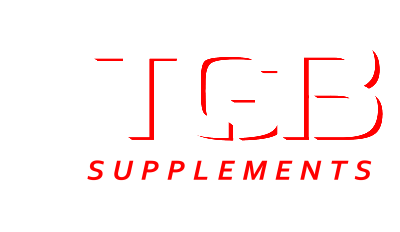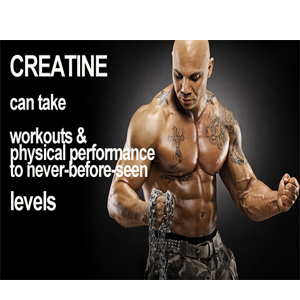What You Need To Know About Creatine
What You Need To Know About Creatine
Creatine
Have you ever walked into a supplement store, or went online to look for creatine, and didn’t know where to look or what to look for? Protein isn’t the only supplement that there are various forms in which they come in. Another supplement that can be confusing when first starting out, and really getting to know supplements is creatine. The different types of creatine include: hydrochloride (HCL), monohydrate, magnesium chelate, phosphate, citrate, nitrate, anhydrous, ethyl ester (CEE), Di-creatine and Tri-Creatine, buffered, oroate, effervescent, micronized, liquid, and pyruvate.
Let’s begin with a brief description of creatine in general. Creatine is a molecule produced in the body, and also found in the foods we eat everyday. It is used to increase high intensity training, and as an energy source by the skeletal muscles in the body. Also, creatine has a nitrogenous organic acid that occurs naturally in the vertebrates, and helps supply energy to all cells in the body. The many forms of creatine are combined with something else to make them “conjugated” creatines.
Creatine Hydrochloride is the first creatine. Also defined as Creatine HCL, it is a creatine bound with hydrochloric acid, and turns into a basic creatine molecule. Considered a more water soluble than creatine monohydrate, these hydrochlorides enhance creatine uptake by muscles (“The effects of creatine ethyl ester supplementation…”).
Creatine Monohydrate is the most popular creatine that is bonded to a single water molecule and used by all types of people and athletes that are looking to build lean muscle mass, maximize performance, and increase strength. It’s also known as “non-protein” nitrogen. It’s obtained in food we eat, or it can be formed from amino acid glycine, arginine, and methionine.
Magnesium Chelate Creatine (MCC) chemically bonds creatine to magnesium causing it to be absorbed with a different pathway compared to the most basic form of creatine monohydrate. How does magnesium chelate creatine get shuttled to the muscles? It uses a different way of shuttling the creatine to the muscle by absorbing through a different pathway so that less is lost and broken down into creatine. Since MCC uses a different pathway to shuttle the creatine to the muscles than say regular creatine monohydrate, it can lead to greater absorption into the muscle cells with less bloating and side effects.
Phosphate Creatine is an organic compound used as a quick source of energy for the muscle fibers to contract when they’re in need of instant energy. Phosphate creatine is also found in the brain, and also known as “phosphocreatine.” ATP, or adenosine triphosphate, is the initial high energy for muscle contraction. Just like ATP, Phosphorylated creatine has a phosphate attached.
Citrate Creatine combines simple creatine with citric acid. Some of the benefits of citrate creatine are that it delays fatigue so you’re not so tired as quickly especially during your workouts, there’s a shorter recovery time where you’ll recover quicker than as if you were to not take any creatine or supplement to help your body heal, an increase in muscle strength and volume, it’s more soluble in water and easily absorbed by a person’s digestive system.
Nitrate Creatine is when a molecule is found to a Nitrate group or creatine bonded to a Nitrate (“mycreatine.org”), which is endogenously produced food that plays a huge role in blood pressure and cardiovascular health in a person. Nitrate is bonded to a polyatomic ion instead of being bonded to a water molecule like the monohydrate.
Anhydrous creatine is a creatine monohydrate with a water molecule removed. It provides slightly more creatine than the creatine monohydrate.
Creatine Ethyl Ester, or CEE, is a creatine containing an ester attached, and converted back to creatine. Compared to a monohydrate, CEE absorbs better and has a longer half-life. It is also slightly more lipophilic, meaning it can dissolve in fats, oils, lipids, and non-polar solvents, which contain bonds between atoms with similar electro negatives.
Di-Creatine Malate is a combination of creatine and malic acid, and also known as a di-carboxylic acid, which is made naturally by all organisms. It allows for a more efficient creatine entry into the muscle cells. Tri-Creatine Malate is a special compound made up of three creatine molecules attached to one molecule of malic acid, which is a bond that is broken by stomach acid. This process releases pure creatine, and is then absorbed. Some of the benefits of tri-creatine malate is that it’s more water soluble, it increases ATP, reduces gastric disruptions, and offers greater bioavailability, increases strength, muscle mass, creatine storage, intensity, and reduces fat levels.
Buffered Creatine is also known as “Kre-Alkalyn” creatine. It is the only creatine that has and uses a patented molecular buffering process. It is by far the most popular of the newer forms of creatine according to Sean Nalewany (“Kre Alkalyn Review: Is Buffered Creatine Better?). Said to be 10 times more powerful than regular creatine monohydrate. Some of the benefits include no bloating or cramping, no necessity for loading phase, and an increase creatine uptake into the muscle cells.
Oroate creatine is compounded by binding creatine and orotic acid. Orotate stables the pH levels during exercise, but more specifically during long endurance, which in turn causes a decrease in skeletal muscle damage. Some of the benefits include an increase in muscle phosphocreatine, free creatine, muscle carosine (which increases muscular endurance), and an increase in muscular strength and endurance. It uses high levels of ATP, which is used to generate more power and energy for workouts. It’s also known as “cardio bursts.”
Effervescent Creatine has both positive and negative charges. Also defined as a creatine that is combined with sugar or sodium and a chemical that causes bubbles in the liquid causing an increase in absorption giving it a better taste. Some claim that it’s absorbed faster into the blood stream. It also increases blood concentration levels more than creatine monohydrate.
Micronized creatine is creatine that is micronized 20 times into a fine powder. It mixes faster and stays dissolved.
Liquid creatine serum is a form of creatine that is in liquid form. Some of the benefits include loading isn’t required, no water retention, and sold in dropper bottle variations. Based on studies shown, it is said to maybe increase absorption, but it’s too new of a creatine to really tell.
Creatine Pyruvate is a unique form of creatine designed to enhance creatines absorption over traditional form of creatine. It’s made up of 60% creatine and 40% of pyruvate (weight).
References:
George, Helga. “What Is Creatine Phosphate?” WiseGEEK. Michelle Arevallo, 15 Sept. 2015. Web. 03 Oct. 2016.
Spillane, Mike; Schoch, Ryan; Cooke, Matt; Harvey, Travis; Greenwood, Mike; Kreider, Richard; Willoughby, Darryn S (2009). “The effects of creatine ethyl ester supplementation combined with heavy resistance training on body composition, muscle performance, and serum and muscle creatine levels”. Journal of the International Society of Sports Nutrition. 6: 6. doi:10.1186/1550-2783-6-6. PMC 2649889. PMID 19228401
GJAV. “Creatine Citrate” gjav.edu. GJAV GO PERFORMANCE. 05 June 2013. Web. 03 Oct. 2016.
By Joe Stauffer On 24 June 2014 In Creatine Supplements, Joe. “Creatine Nitrate: What Is It & Does It Work? – MyCreatine.org.” My Creatine Best Web Resource On Creatine Supplements. My Creatine, 23 June 2014. Web. 03 Oct. 2016.
@muscle_strength. “Creatine Supplements Guide: Learn How To Choose The Right Product.” Muscle & Strength. N.p., 21 Mar. 2016. Web. 03 Oct. 2016.
Nalewanyj, Sean. “KRE ALKALYN REVIEW: IS “BUFFERED” CREATINE BETTER?” Sean Nalewanyj Real ScienceBased Fitness Advice. Nalewanyj, n.d. Web. 03 Oct. 2016.


Add Comment